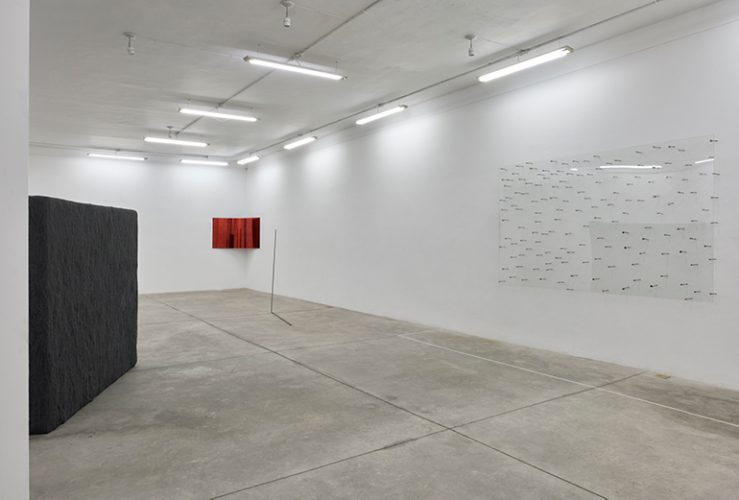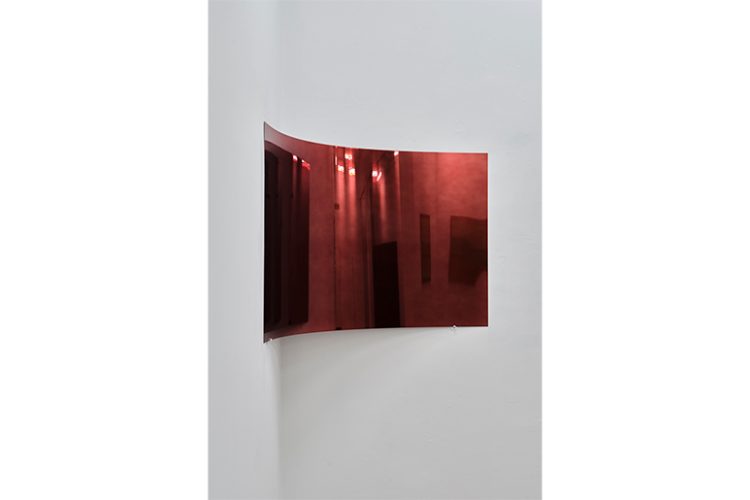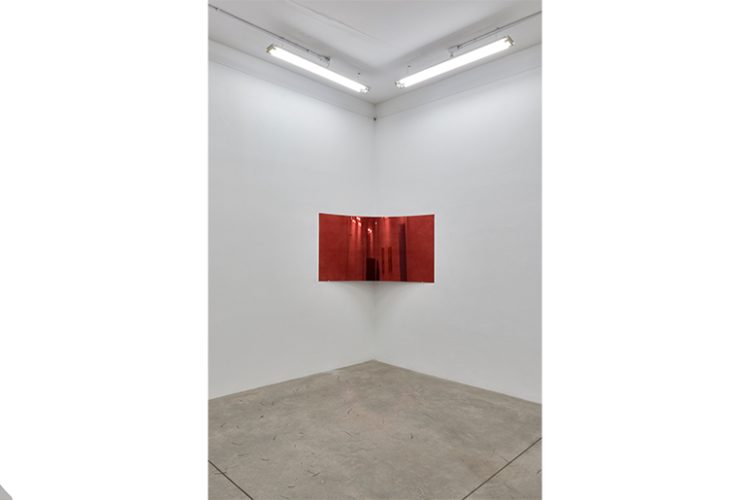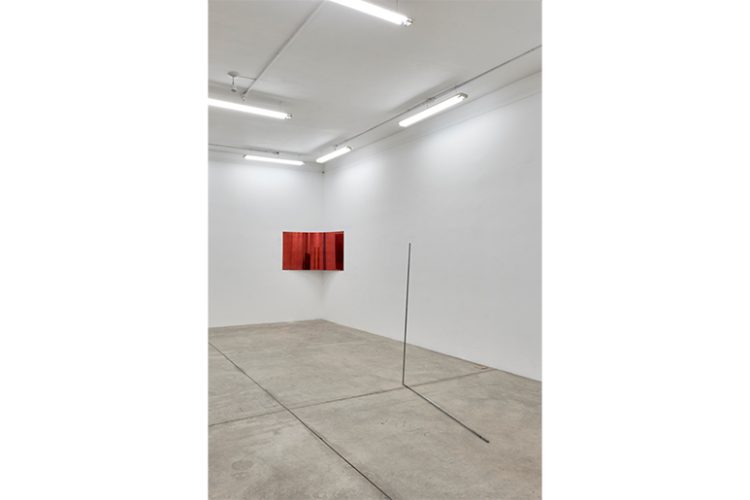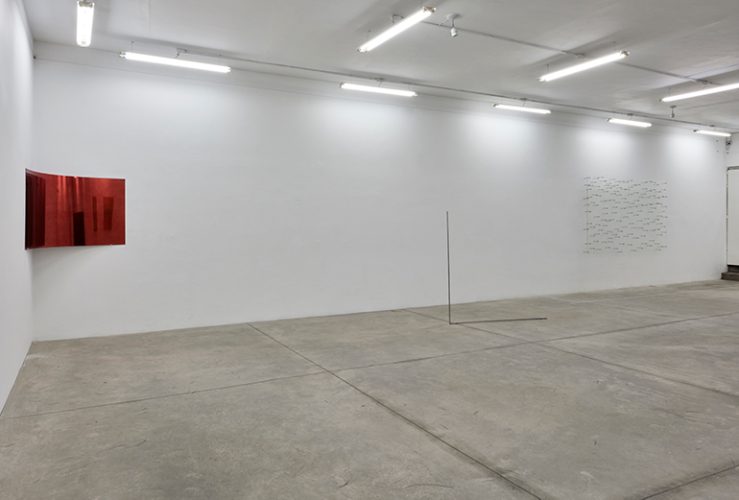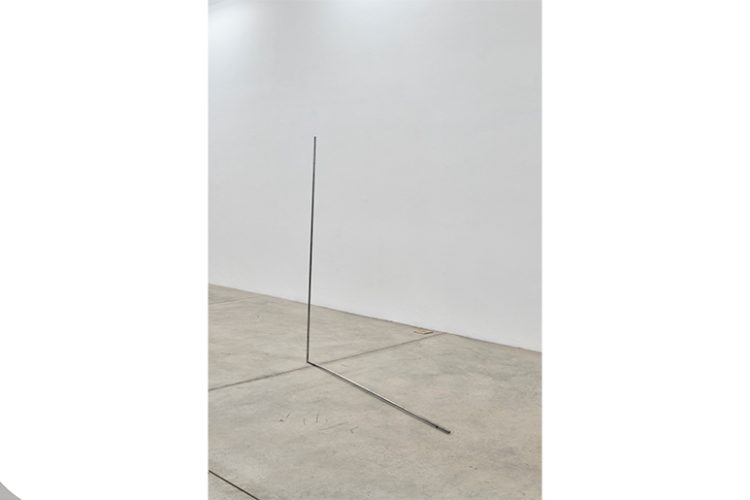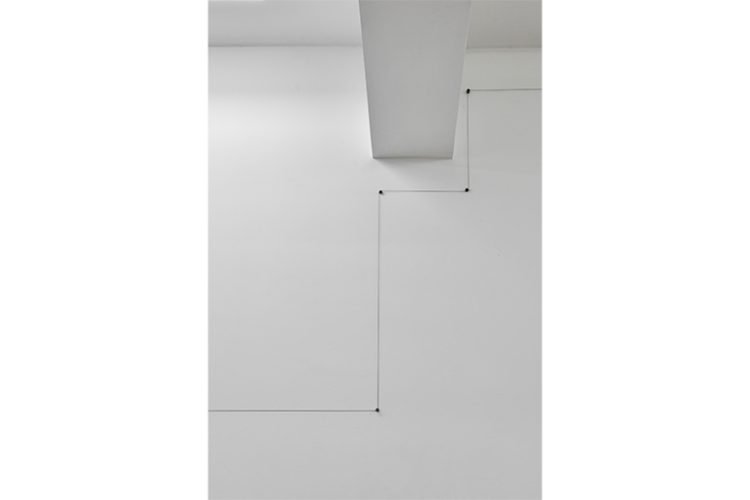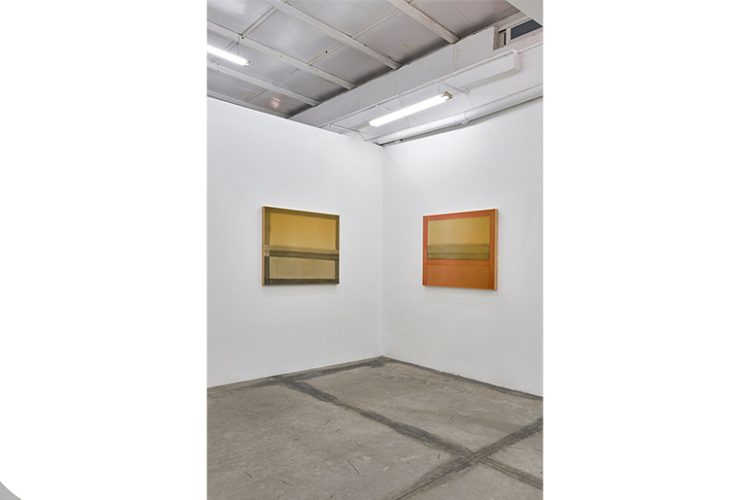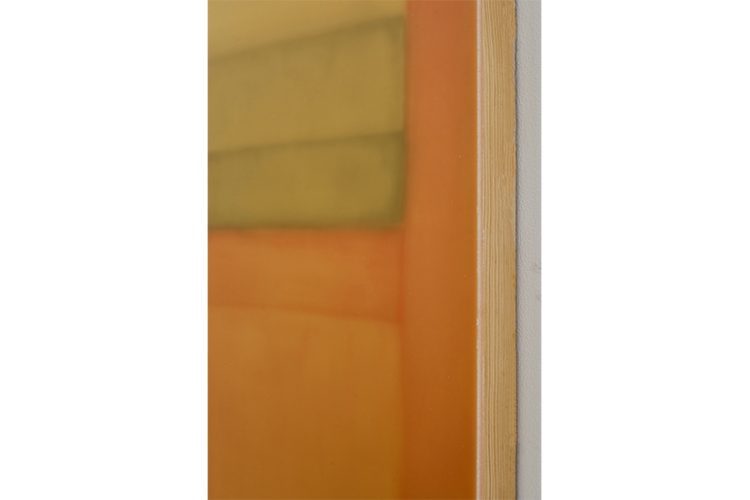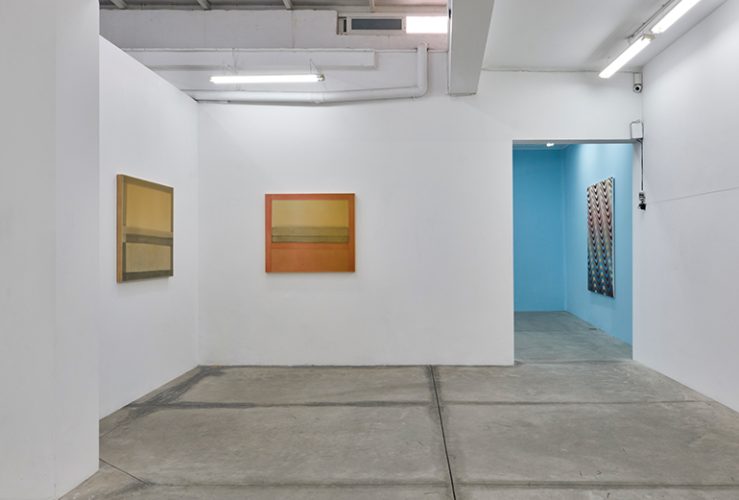Tiro al Blanco Gallery. GDL. Curated by Sandra Sánchez
Choreographies of Matter
We pause. It’s not a question of subjects and objects, but rather of the assemblages containing and delimiting them.
Palpitations.
Touches.
Folds and unfolds among materials,
thoughts, sounds, certainties,
indeterminacies, gaps, and enigmas.
A living constellation where properties—temporal and fluctuations—are the result of the relationship and not the other way around.
(((Vibrations)))
Energy
The initial movement is a distance.
Turning one’s back on contemplation: it’s not about a body looking to decode and master.
This exhibition condenses various stages of Manuela García’s work in order to show the ethics running through it. Her production breaks with the aesthetic tradition that founds modernity itself: a subject that feels in order later to know everything about an object. Faced with the arrogance of power, a swaying: choreography in which taking a stand does not mean rushing to define, promise, and constrain what happens.
Here, the objects do not render servitude to the gaze,
but rather constitute an environment in order to become a body.
It is not for having a body that the body is ours. A body begins in its flesh, in its organs and bones; nevertheless, its unity is impossible—it’s always overflowing, a body between bodies. Manuela’s work ethic operates with a basis in this knowledge: a body is made in the middle of, touching what surrounds it (near or far). Human and non-human membranes. Everything has the same value; its relevance is its uniqueness; its uniqueness consists in its properties and the assemblages of which it is part. An alchemist workshop put in play in order to suggest thresholds.
Logic not of what is, but rather of what is being between.
Textures
R o u t e s
The philosopher Jane Bennett works on a division that broadly resonates with this exhibition. In Vibrant Matter she writes about the difference between objects and things. Objects depend on the subject’s judgment and appear before them with a name, an identity, and a pattern, while things have a conatus: that is, a perseverance in their own existence, a vibration—physical and enigmatic—that may or may not come into contact with subjects and that does not depend upon their understanding in order to exist. This is what Bennett calls thing-power.
.
.
